There were two tours conducted in December 2022. This is the first tour report that took place Dec 7-11, 2022. Reported by bird guide, Yoshinori Toshitake
Day 1
We gathered at Fukuoka Airport and headed to the Ariake Sea in a private car. On the way, we had lunch at the service area of the highway, and started birding at the reservoir. Last year there were only a few birds, but this year more than 5,000 Bikal Teal were there. It was an overwhelming amount of birds!
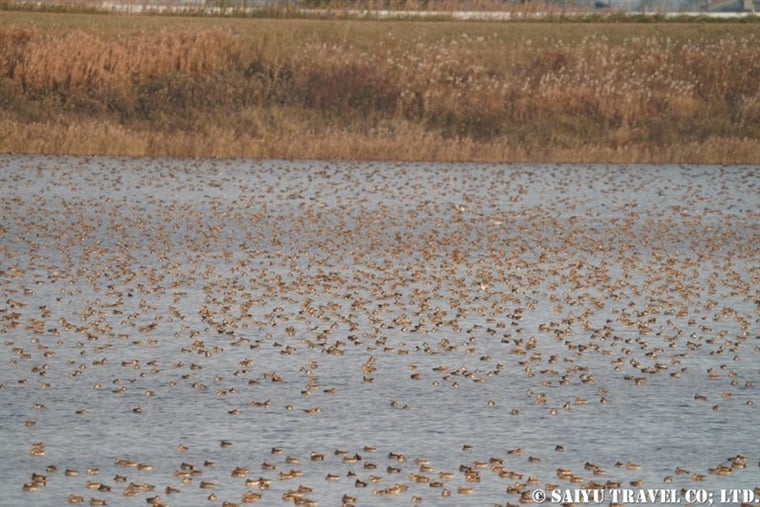
With so many ducks, we were able to enjoy the appearance of birds of prey such as the Hen Harrier and Northern Goshawk. But when returning to the car, I was happy to hear the cry of the Eurasian Magpie. Magpies inhabit Fukuoka, Saga and Nagasaki Prefectures, but especially around Saga, their numbers are declining so there are times when I can’t even see them. So carefully, we approached them, and this time could even observe them, luckily. I was able to take photos of the birds catching food on the ground and in the trees.
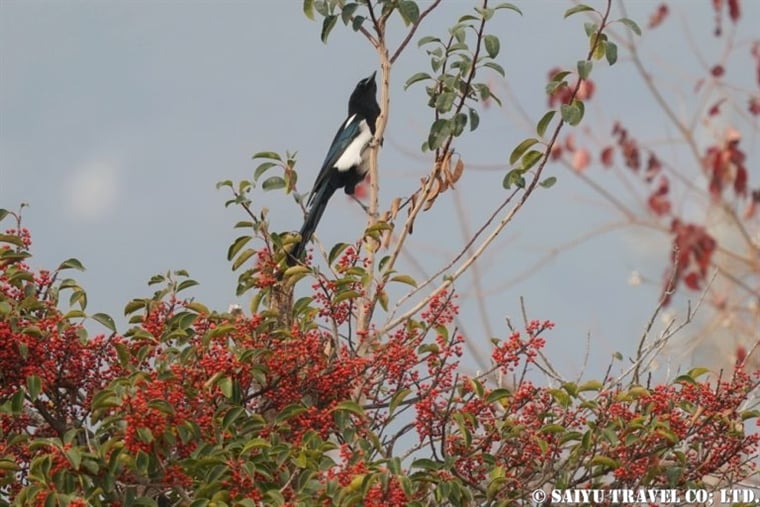
After that, we went to Higashiyoka higata (shoreline), and since it was low tide, we could see the vast tidal flat before heading to the hotel.
Day 2
In the morning, we went to the same Higashiyoka tidal flats to observe waterfowl, such as sandpipers and plovers in the high tide. Unlike yesterday, the birds were all so close, and we were enjoying observing the flocks of Dunlin, Eurasian Curlew, Common Redshank, Common Shelduck, Saunder’s Gull, and many other waterfowl. Then, suddenly the flock of Dunlins all took off, all at once. They synchronized their movements, and I enjoyed the murmuration, as they shifted their direction in unison. This is exactly why the Higashiyoka mud flats are a great example of Japanese shorelines, a truly vast and wonderful environment.
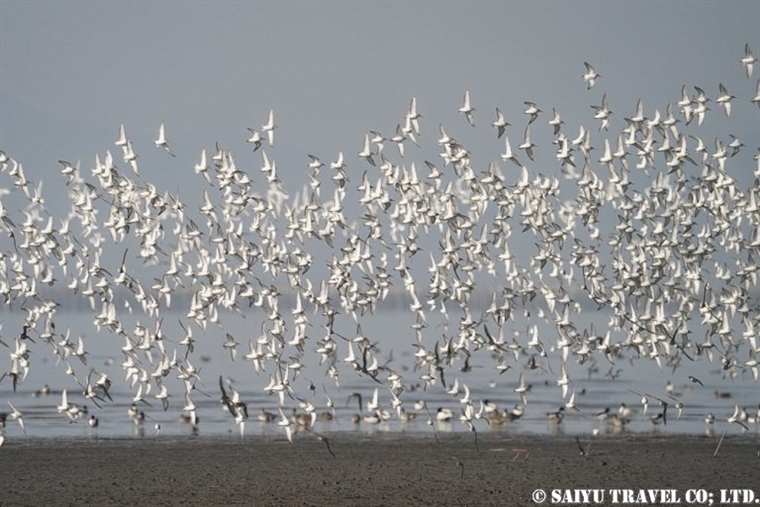
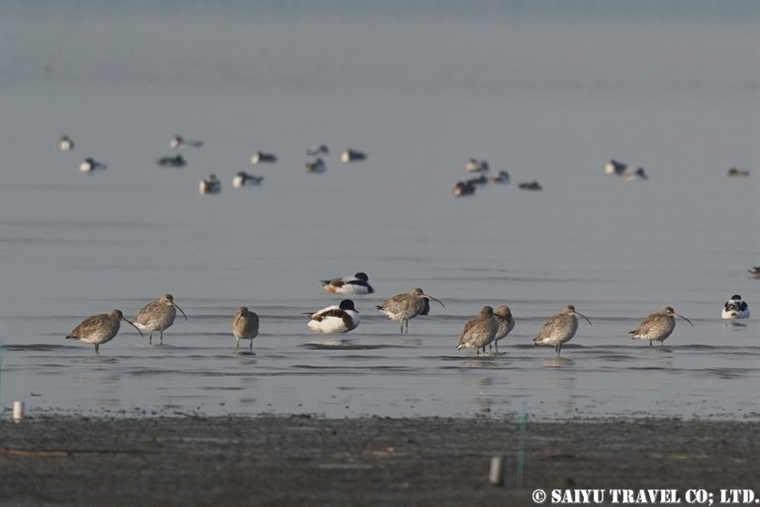
On this day as well, we had lunch on the highway service area, and in the afternoon, we headed to the Isahaya reclaimed land area. In the reed beds, we observed the Hen Harrier, Eastern Marsh Harrier and the Merlin as they were hunting. In the agricultural areas there were Northern Lapwing, Common Starling and Chestnut-eared Bunting, and in the waterways we saw a Green Sandpiper. We also could enjoy seeing some wild mammals, a Japanese racoon dog ‘tanuki’ in the reed beds, and wild boars ‘inoshishi’ in the farmed areas.
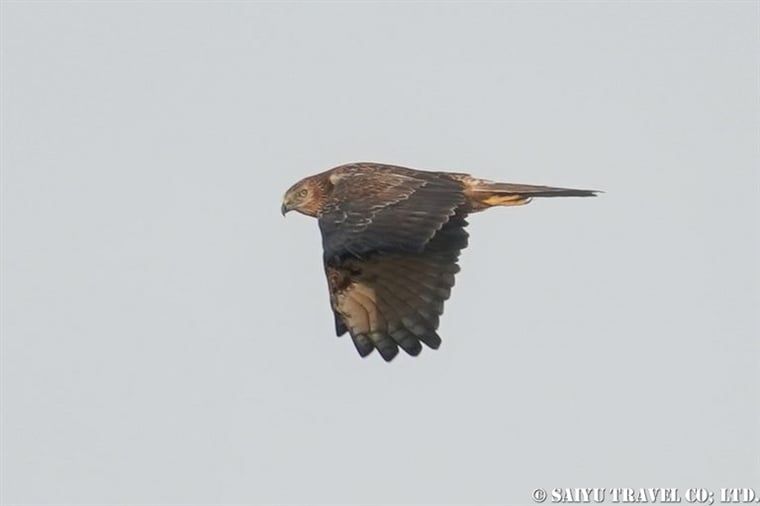
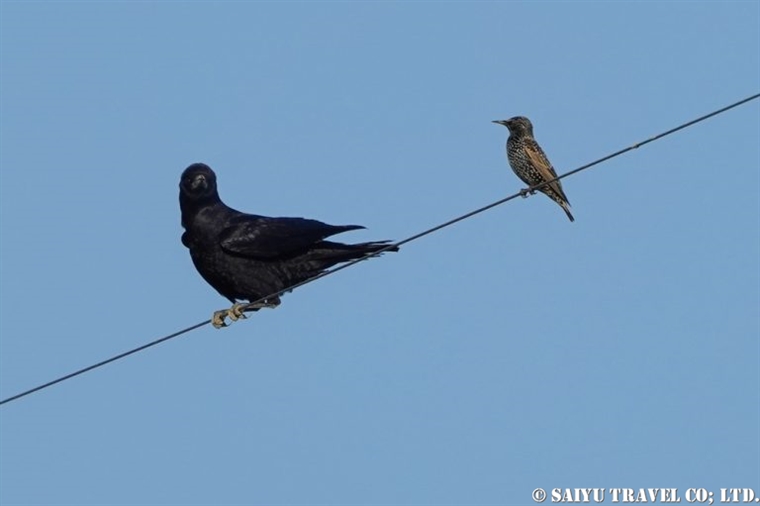
Day 3
In the morning, we visited the reclaimed land again and observed the Black-winged Stilt, Common Kingfisher and a Common Kestrel. I also saw a wild boar in the farmland area. Yesterday, it was only showing its tail, as it ran away, but today I was able to see it nearby.
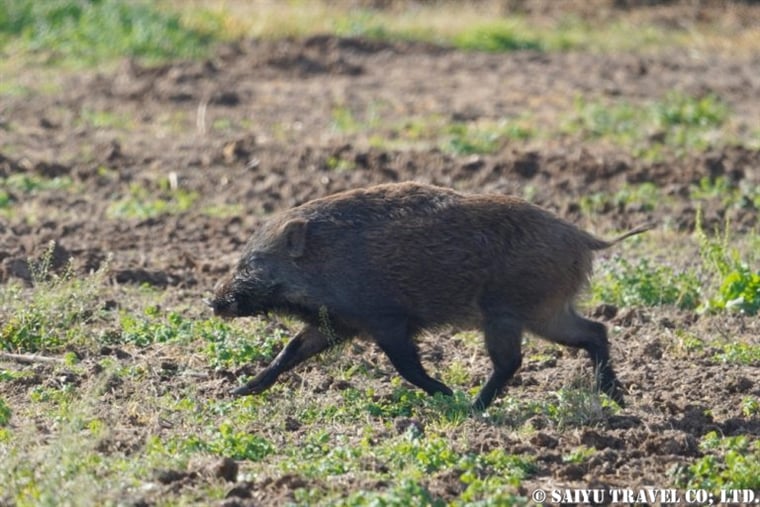
After that, we took a ferry from Shimbara, and watch the birds from the boat. As soon as the boat departed, a flock of Black-headed Gulls, gathered in front of us to catch food thrown by the passengers, and we enjoyed watching them fly around with the beautiful backdrop of Mt. Unzen.
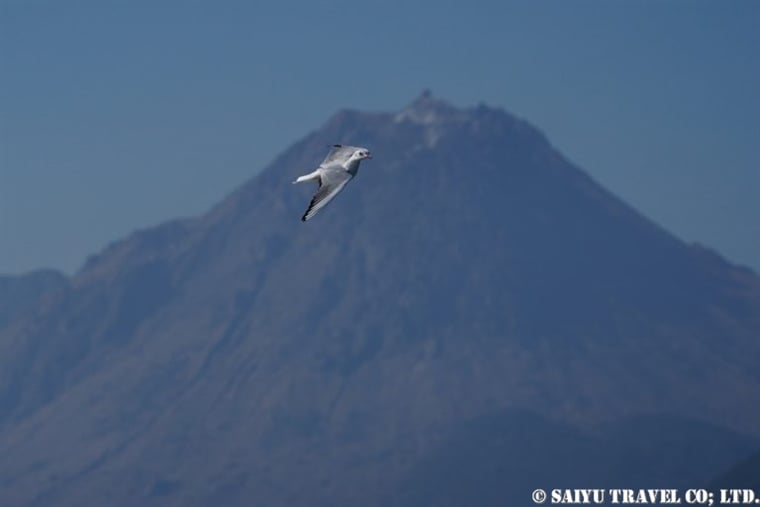
Then, just before entering the port, about 600 Brown Boobies were also observed on the embankment. I was amazed at just how many of them were gathered there.
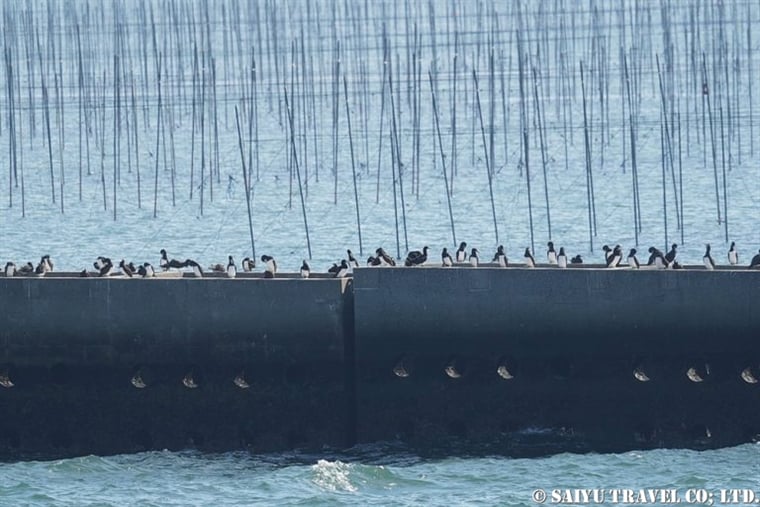
We got off the ferry, went to Izumi, even though it was early in the evening, we observed the cranes on the reclaimed land. Of course we saw the Hooded Cranes and White-naped Cranes, but I was feeling like I was missing something, so I searched hard and found a couple of Sandhill Cranes also mixed into the flock.
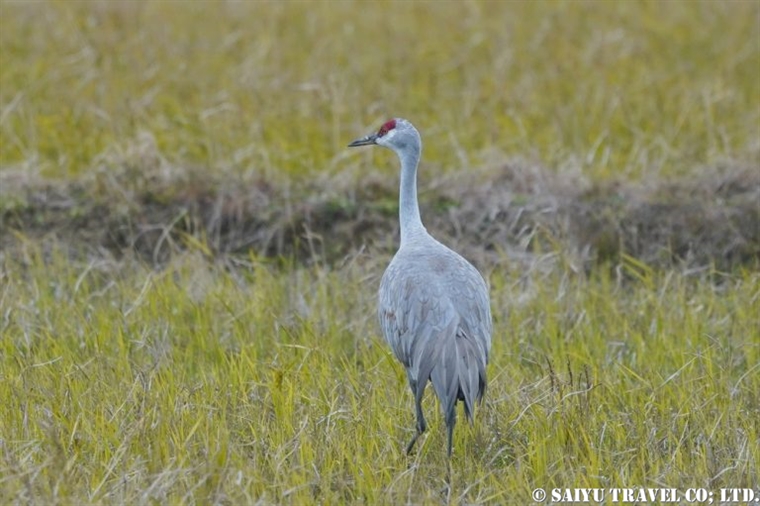
Day 4
Cranes are most active in the early morning hours, as they are fed in the morning. On this day, we arrived while it was still dark, and aimed at shooting the cranes flying against the backdrop of the sunrise and the moon. We were lucky that the weather was good, and the moon was almost full. While it was still a bit dark, a Short-eared Owl appeared as it was being attacked by a crow.
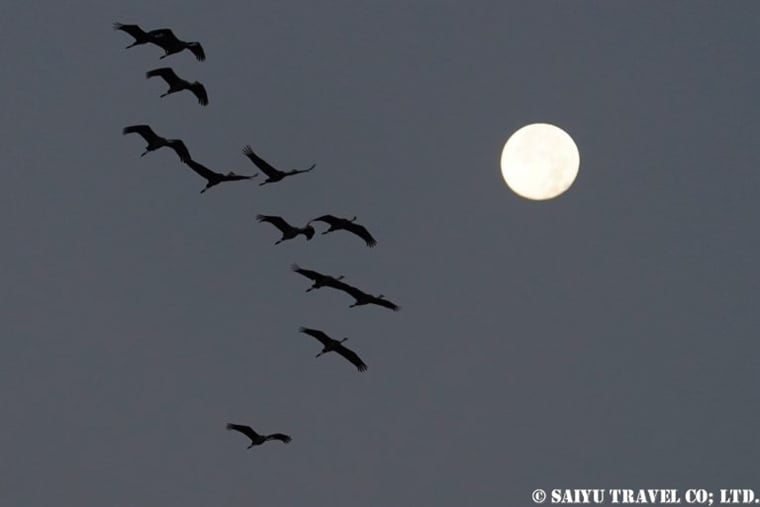
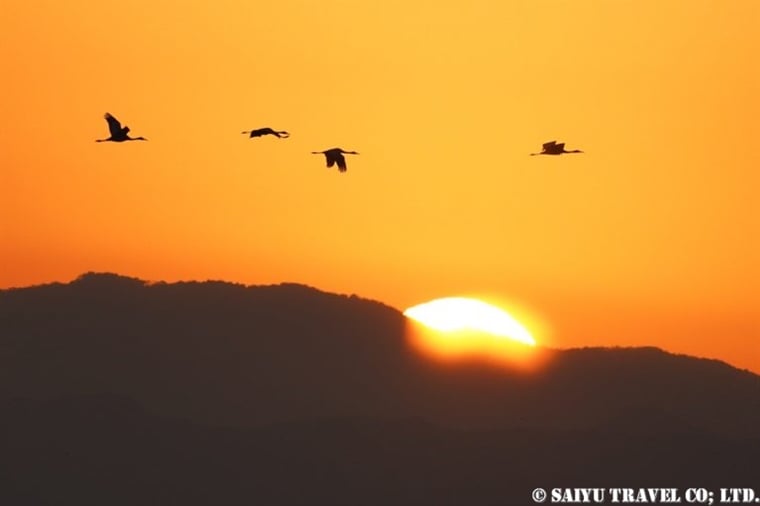
Once the cranes settled down, my next target to see was the Daurian Jackdaw. Just at this timing, a group of rooks gathered on the electricity wires above and there was a jackdaw mixed in with them as well. I could see the white type of jackdaw (commonly called a Shiromaru), from a distance, so I was able to photograph it capturing the entire body, without any difficulty.
とミヤマガラス.jpg)
It seems that the sole purpose of this same electric wire is not just to pass electric currents, but to give a flock of Cinnamon Sparrows a perch also. Unlike the common sparrows where both sexes have the same patterns, these Cinnamon (or Russet) Sparrows have different patterns for males and females, making it a very cute bird to watch. After watching them for a while, we tool a walk along the river to aim to see the European Penduline Tit and Chestnut-eared Bunting. Although I could hear their calls, I could only visually confirm it once we returned to the car. Other species seen along the river included the Dunlin, Osprey, Eastern Buzzard and Common Reed Bunting.
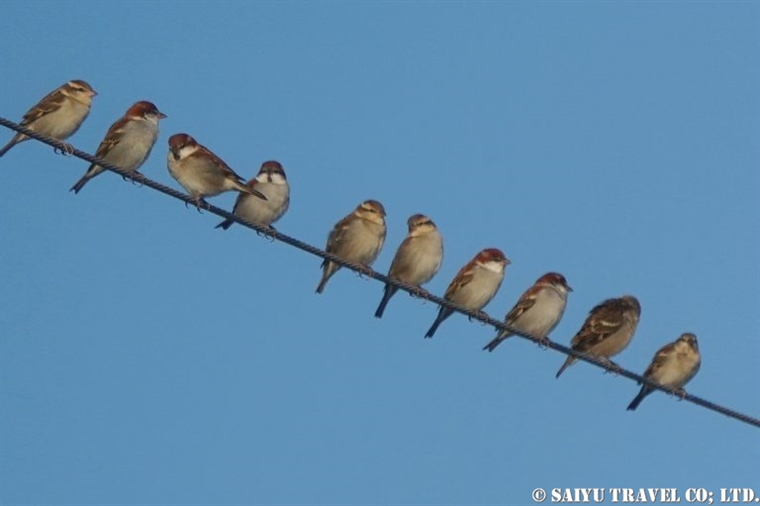
In the afternoon, we headed up the mountains to target the Crested Kingfisher and the Mountainhawk Eagle. We saw Mallards, Eurasion Wigeon, Common Pochard, etc, resting on the open water. The Mandarin Duck, which prefers dark places near the water’s edge, is the most cautious one, so even if we are far away, if it senses we are within a certain range, it will fly away to hide. Unfortunately, we were not able to see the Mountainhawk Eagle or the kingfisher, but we were able to hear the cries of the Eurasian Jay and Japanese Grosbeak. In the evening, we returned to the reclaimed land to observe the White-naped Cranes and Hooded Cranes for a while.
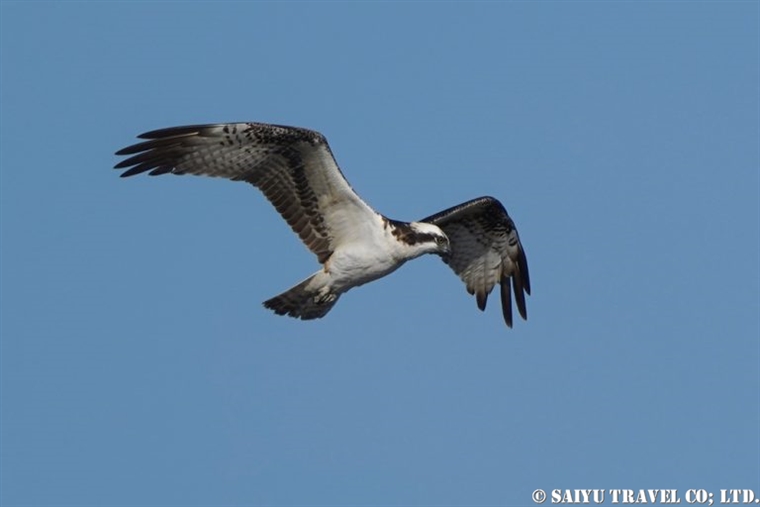
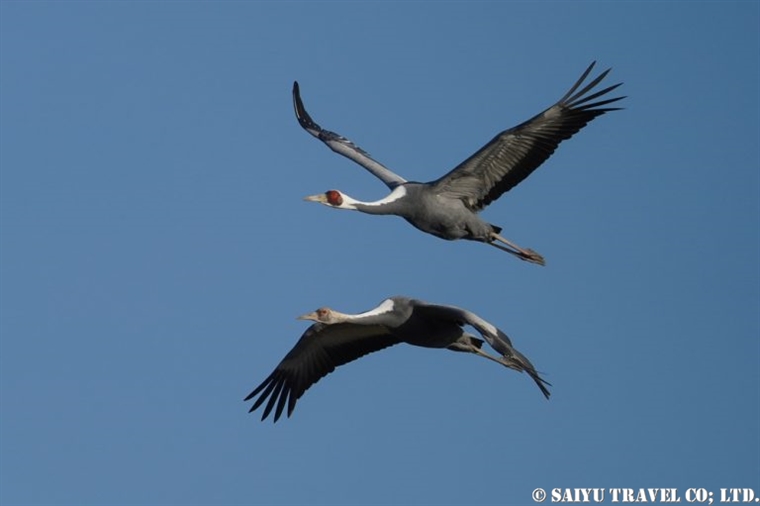
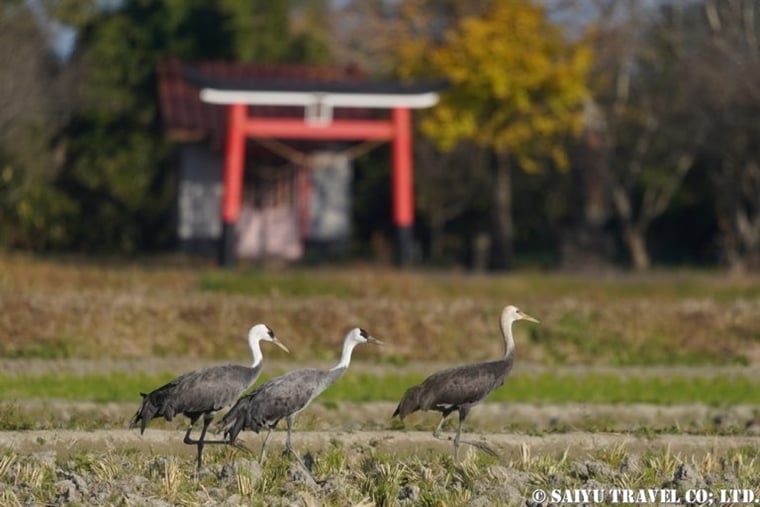
Day 5
This morning, again, we arrived at the reclaimed land before dawn and observed the cranes into the morning. On this day, the moon was hidden by the clouds, and the sunrise was different from yesterday, so we could experience the daily changes of the weather. There were fewer cranes this year, but the density of the foraging in the morning is quite impressive. They started eating the food scattered far away and gradually approached us.
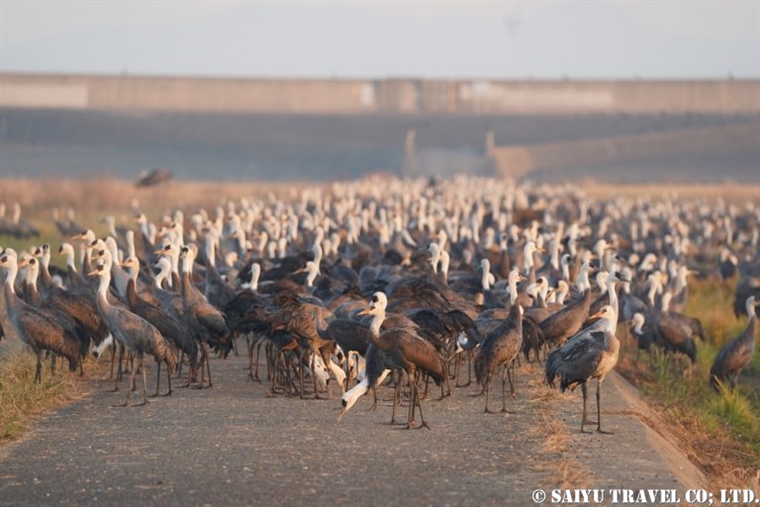
After returning to the hotel and checking out after breakfast, we observed the cranes some more and saw some Eurasian spoonbills on the reclaimed land. Izumi is a famous wintering ground for the cranes, but there are also many other species of birds. The Eurasian Spoonbills are astonishing as they sit right next to the road or forage in the three-sided channel.
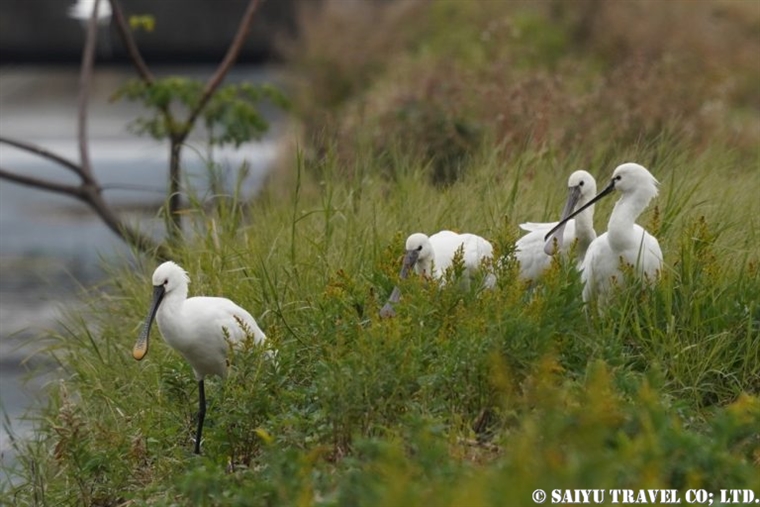
After enjoying, the birds of Izumi until the very last minute, we headed to Kagoshima Airport, where we ended the trip. There were fewer cranes this year, due to the influence of bird flu, but I was able to enjoy the smaller birds and raptors, besides the cranes. It was a photography-focused tour, but Kyushu in the winter has a lot to photograph, and I think everyone who participated, took a lot of photos.
(99 Confirmed Species)
Photo & Text: Toshitake YOSHINARI
Observation: 7-11Dec 2022, Ariake Sea, Izumi
*Contact us, Saiyu Travel for more information about wildlife and bird watching in Hokkaido. We can make various arrangements for your trip.
*Youtube : Wildlife of Japan
Tags: Birds Photography of Japan, 出水, Bikal Teal, Birding tour Japan, Kagoshima, Crane photography, Crane photography Izumi, Izumi, Ariake Sea, Crane Migration Site, Hooded Crane, Wildlife of Japan, White-naped Cranes, Birds of Japan, Sandhill Crane



